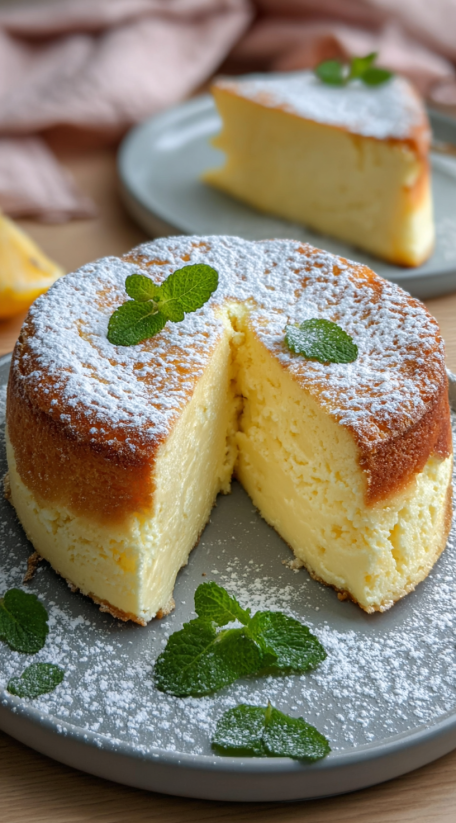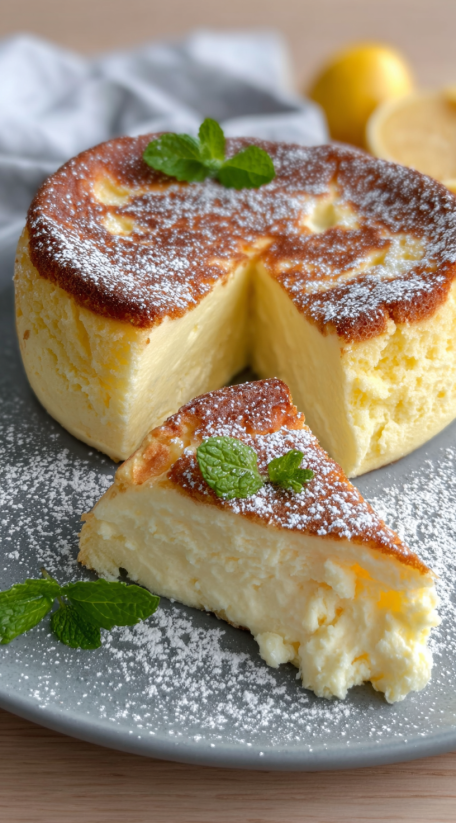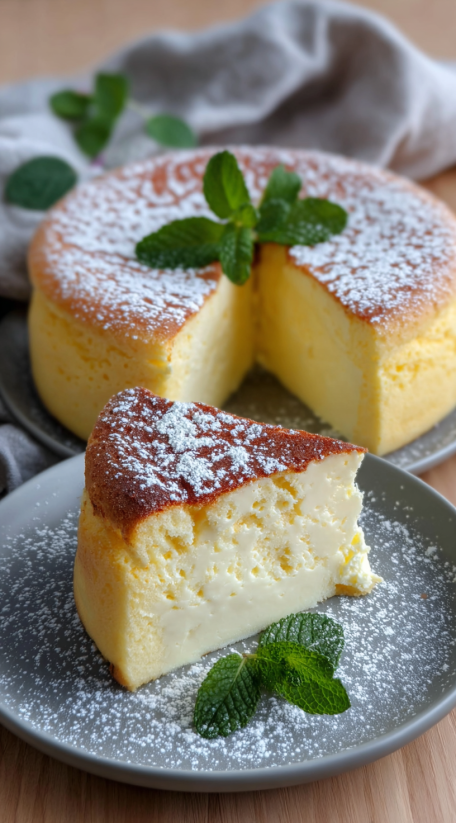 Bookmark
Bookmark
Japanese Cheesecake is the dessert I make when I want something incredibly light yet supremely satisfying It is soft pillowy and jiggly with just a kiss of lemon and sweetness Its delicate texture makes each bite melt away leaving you wanting more
My family asks for this cheesecake whenever we have a special occasion It all started the first time I brought it to a spring brunch After seeing everyone smile at its wobbly texture and gentle flavor it became a tradition
Ingredients
- Cream cheese: Essential for the velvety base Choose a full fat high quality cream cheese for best flavor and smoothness
- Eggs: Crucial for the airy soufflé structure Fresh eggs give the best volume when whipped
- Cake flour and cornstarch: These keep the crumb soft and tender Opt for superfine cake flour for extra delicacy and bright white color
- Lemon zest and lemon juice: The zest adds fragrance while the juice brings a refreshing tang Use an organic lemon for maximum aroma
- Unsalted butter and milk or heavy cream: They make the cake rich and moist Pick real unsalted butter and whole milk or full fat cream for a classic taste
Step by Step Instructions
- Prepare the pan and oven:
- Line a 20 centimeter cake pan with parchment paper and preheat your oven to 150 degrees Celsius Prepare all the ingredients to keep the process smooth and stress free
- Melt the dairy:
- Melt cream cheese butter and milk together over a double boiler or using the microwave Stir gently until the mixture is completely smooth Let this cool for several minutes to avoid cooking the eggs later
- Mix the yolks and citrus:
- Whisk egg yolks lemon zest lemon juice and vanilla until smooth This step layers flavor and moisture into the batter making it bright but not overpowering
- Combine flour into yolk mixture:
- Sift cake flour and cornstarch right into the yolk blend Fold them in carefully so the batter is light and clump free Add the cooled cream cheese mixture and stir until everything is just combined with no lumps
- Whip and fold the egg whites:
- In a totally clean dry bowl beat the egg whites with cream of tartar until they become foamy Slowly sprinkle in the sugar and continue beating until stiff glossy peaks form This creates the cheesecake’s signature loft and cloud texture
- Finish the batter:
- Add the whipped egg whites to the main batter in three stages Fold oh so gently with a spatula using a lifting motion This preserves the aeration and keeps the cake cloudlight Pour the batter into the lined pan and gently smooth the top
- Bake and cool:
- Place the pan in the oven and bake for 45 to 50 minutes until the center springs back when touched and a skewer comes out clean The cake will rise and possibly crack on top Leave it to cool in the pan for 10 minutes then move to a wire rack For best texture chill in the refrigerator for at least one hour
- Garnish and serve:
- Dust the top with powdered sugar or fresh lemon zest Slice the cake with a warm sharp knife for perfect edges The cheesecake should look wobbly and taste like a lemon cloud
 Bookmark
Bookmark
Lemon is my favorite part because it adds a sparkle of freshness The first time I made this my whole family was amazed by how jiggly and springy the cake turned out It is now my go to dessert for every birthday
Storage Tips
Keep Japanese Cheesecake covered in the refrigerator to maintain its moistness It stays fresh for up to three days Store in an airtight container and let it come to room temperature for about twenty minutes before serving so the texture softens and the flavors bloom For longer storage you can freeze it tightly wrapped in plastic then defrost slowly in the fridge
Ingredient Substitutions
If you are avoiding dairy use vegan cream cheese and full fat coconut milk for a similar creamy effect Arrowroot or potato starch can replace cornstarch for those with sensitivities If you want extra tang try adding a little yuzu juice along with the lemon
Serving Suggestions
Serve slices with fresh berries on the side or a quick berry compote For a special touch add a dusting of matcha or a drizzle of honey Sometimes I offer an assorted afternoon tea tray with mini slices of Japanese Cheesecake and green tea for a classic Japanese style treat
 Bookmark
Bookmark
Cultural and Historical Context
Japanese Cheesecake was inspired by Western style cheesecakes but developed in Japan to suit local tastes It blends the lightness of European chiffon cakes with the richness of cream cheese Over the years it has become a symbol of bakery culture across Japan often appearing at celebrations or family gatherings It truly reflects a preference for refined subtle sweetness
Frequently Asked Questions
- → What makes Japanese cheesecake different from New York cheesecake?
Japanese cheesecake is known for its airy, soufflé-like crumb created by folding meringue into the batter. This results in a much lighter and fluffier texture compared to the dense, creamy New York version.
- → How do you achieve the signature fluffy texture?
Beating egg whites to stiff peaks and folding them gently into the batter is key. This technique ensures the cake rises with a soft, delicate crumb.
- → What flavors are typically found in Japanese cheesecake?
Lemon zest and juice bring a hint of citrus brightness, while cream cheese delivers subtle richness. The overall sweetness level is mild.
- → How should you serve Japanese cheesecake?
Slice and serve chilled, with a dusting of powdered sugar or fresh berries. Green tea or matcha latte pair beautifully with its gentle flavor.
- → Can you make a plant-based version?
Absolutely! Vegan cream cheese, aquafaba, and plant-based milks offer excellent substitutes while maintaining the cake’s distinctive texture.
- → Why does Japanese cheesecake jiggle?
The meringue structure and gentle baking create a soft, moist crumb that wobbles when moved—a sign of its airy, delicate structure.
